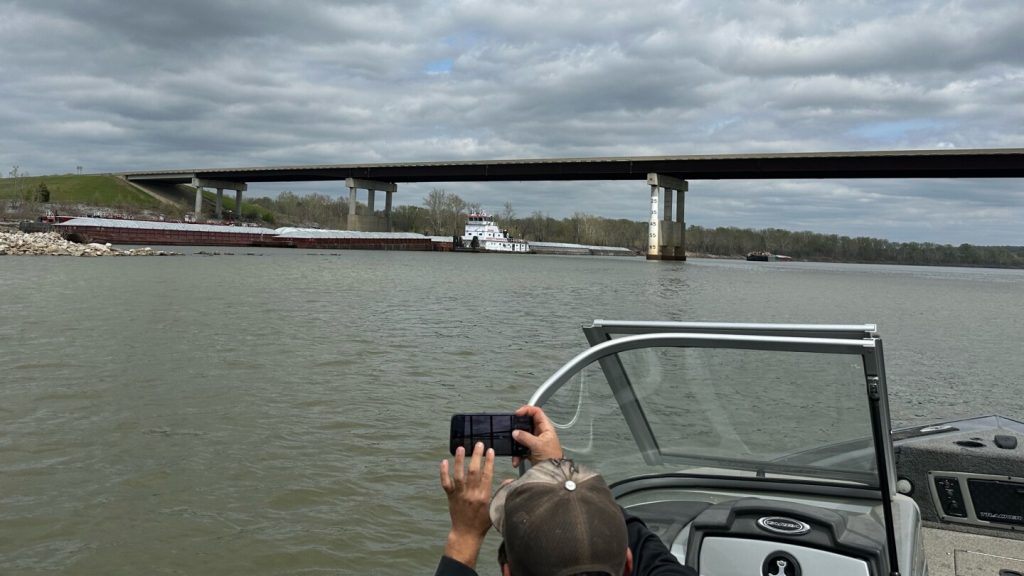In Sallisaw, Oklahoma, the Oklahoma State Patrol closed a highway following a barge colliding with a bridge over the Arkansas River. The closure of South U.S. Highway 59 occurred around 1:25 p.m. after reports of the incident, with traffic being diverted from the area. The bridge, which spans the Arkansas River where it meets the Robert S. Kerr Reservoir, will remain closed until a thorough inspection can be conducted. Fortunately, there were no injuries reported on either the highway or the barge. The cause of the barge colliding with the bridge remains unknown at this time. This incident coincided with operations to remove a section of damaged steel from the collapsed Francis Scott Key Bridge in Maryland, which occurred as a result of a cargo ship crashing into one of its main supports and causing it to crumple into the Patapsco River.
The closure of the highway and bridge in Sallisaw, Oklahoma, has disrupted traffic in the area as engineers and authorities work to assess the damage and ensure the safety of the structure. The closure will remain in effect until a thorough inspection can be conducted to determine the extent of the damage and the necessary repairs or reinforcements needed to make the bridge safe for use. The collision between the barge and the bridge has raised questions about the safety of waterway transportation and the importance of proper navigation and communication protocols to prevent such accidents in the future. It serves as a reminder of the potential risks and challenges associated with transporting cargo via waterways, especially in areas with bridges and other structures that intersect these routes.
The incident in Sallisaw comes at a time when infrastructure concerns are in the spotlight, with the collapse of the Francis Scott Key Bridge in Maryland serving as a stark reminder of the importance of maintaining and upgrading critical transportation structures. The collapse of the bridge, caused by a cargo ship crashing into one of its main supports, highlights the vulnerability of aging infrastructure to unexpected events and the need for regular inspections and maintenance to prevent disasters. The response to these incidents underscores the collaboration and coordination required between government agencies, engineers, and law enforcement to address the immediate safety concerns and plan for the future maintenance and repair of these vital structures.
As authorities continue to investigate the cause of the barge collision in Sallisaw and work to reopen the affected highway and bridge, concerns about similar incidents in the future linger. The impact of such accidents extends beyond the immediate disruption to traffic and commerce, as they raise questions about the broader implications for public safety and the reliability of critical infrastructure. The collaboration between state patrol, engineers, and other stakeholders in responding to these incidents highlights the importance of a coordinated and swift response to ensure the safety of the public and the integrity of transportation networks. Moving forward, it will be essential to learn from these incidents and implement measures to prevent similar accidents from occurring in the future.
Despite the challenges presented by the collision between the barge and the bridge in Sallisaw, the response from authorities and stakeholders demonstrates a commitment to addressing the immediate safety concerns and ensuring long-term solutions to prevent future accidents. The closure of the highway and bridge underscores the need for ongoing maintenance and inspection of critical infrastructure to identify potential weaknesses and address them before they lead to catastrophic failures. The incidents in Sallisaw and Maryland serve as a reminder of the complex and interconnected nature of transportation systems and the importance of proactive measures to mitigate risks and ensure the reliability of these systems. By learning from these incidents and implementing appropriate safety measures, authorities can help prevent similar accidents and safeguard public safety and infrastructure integrity.


